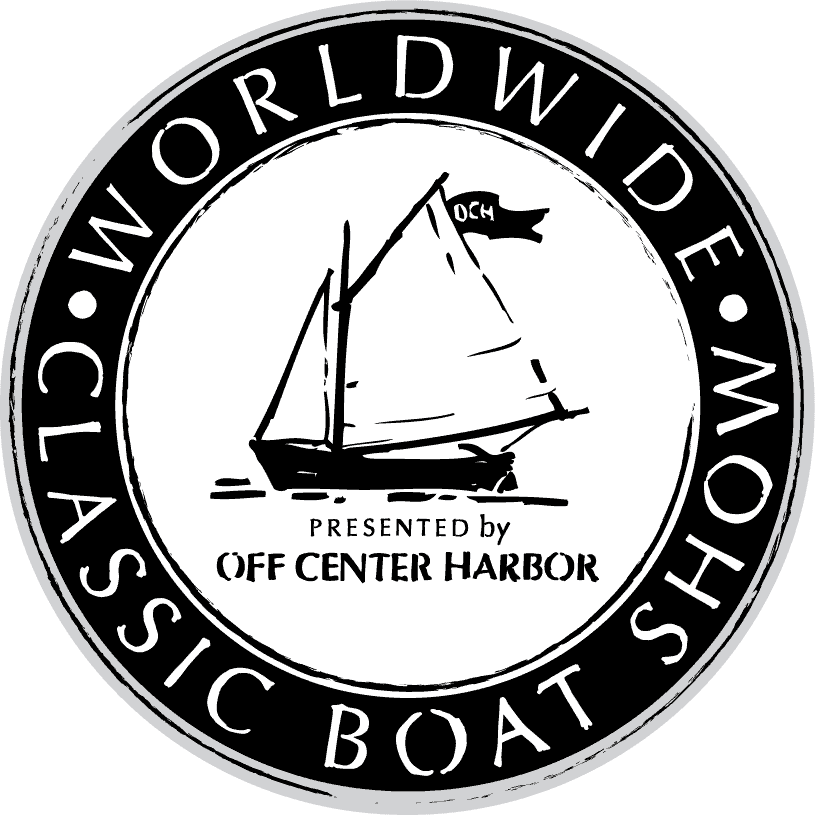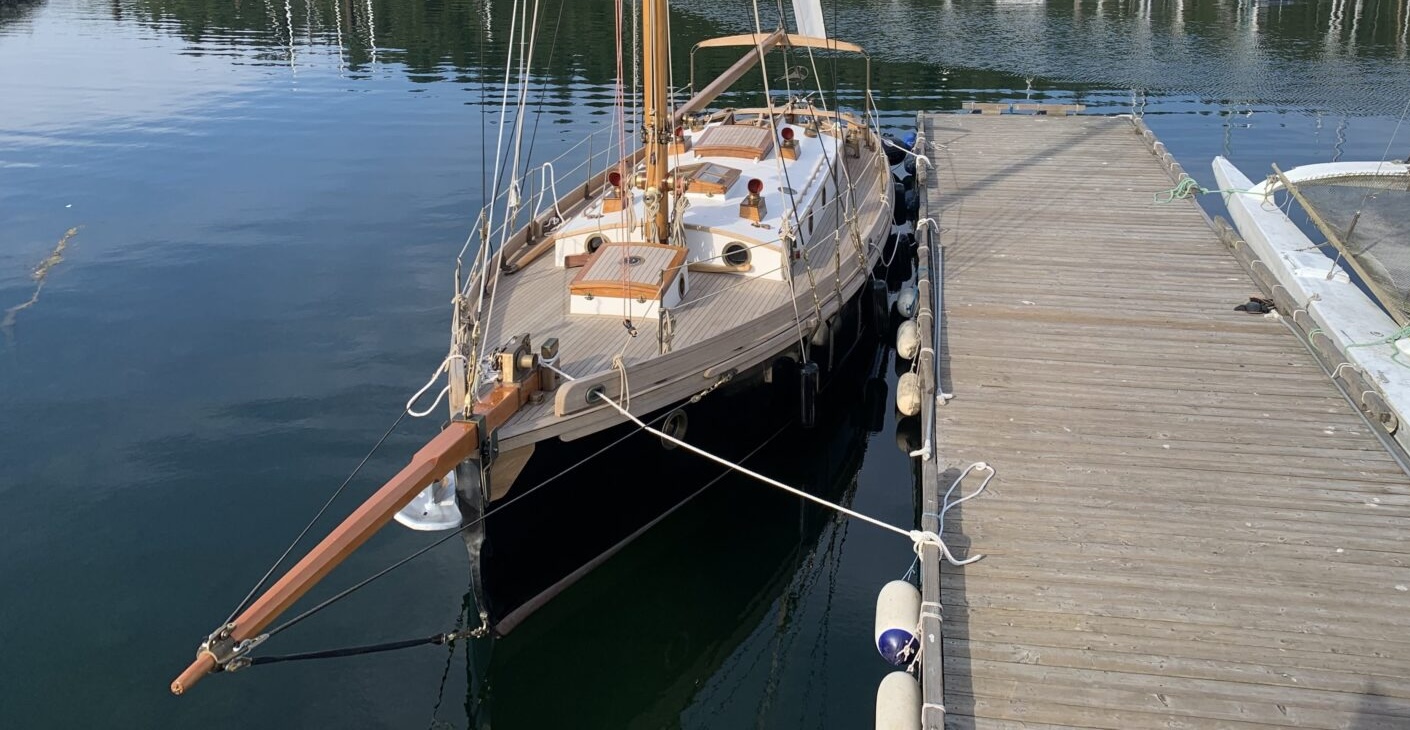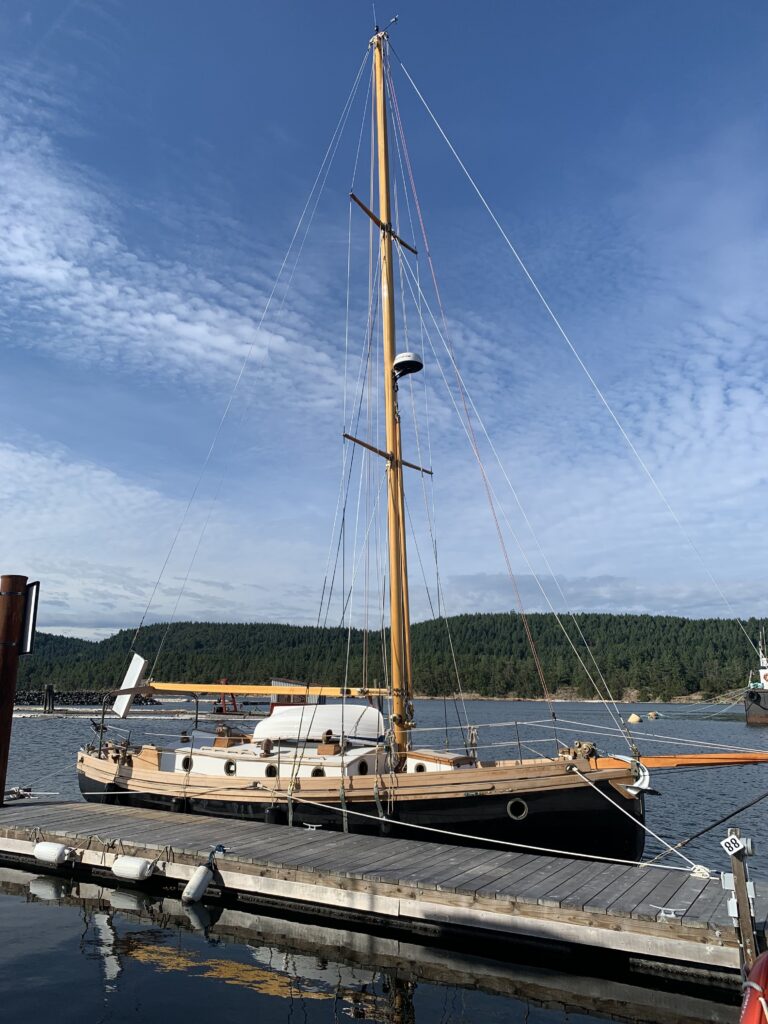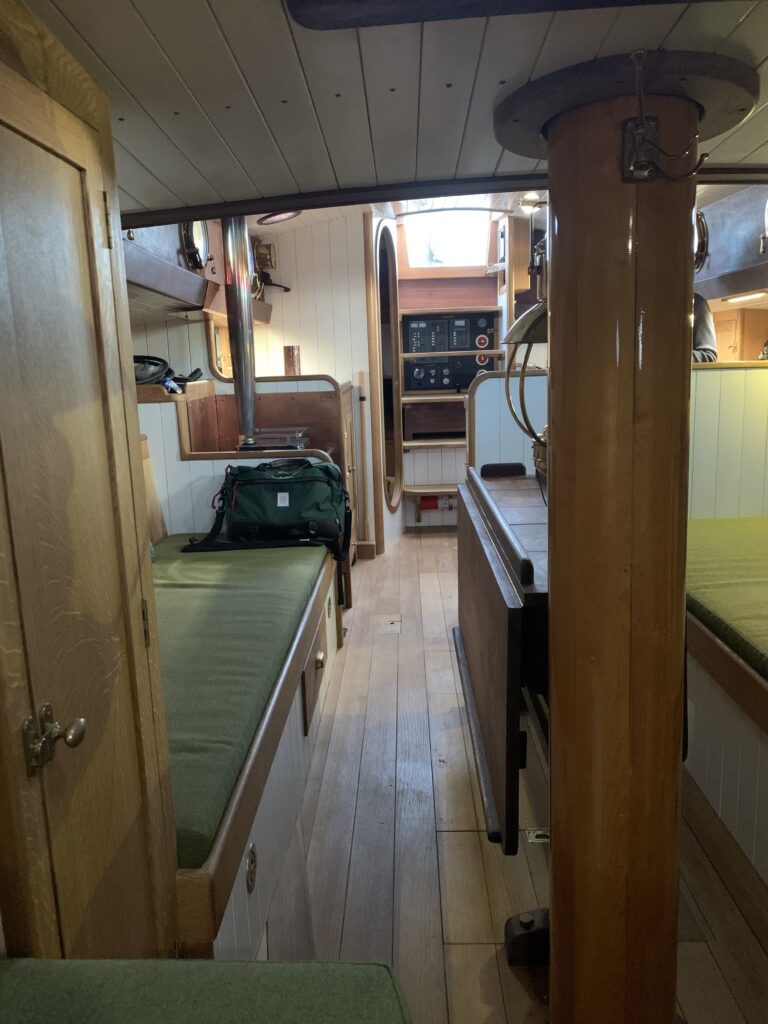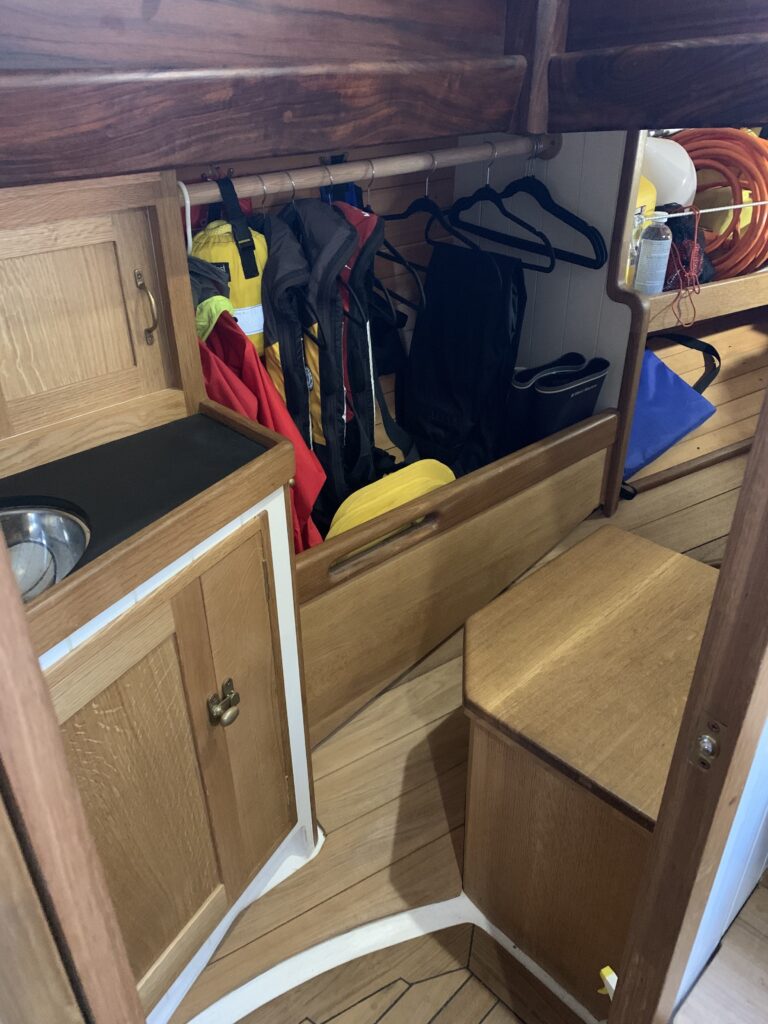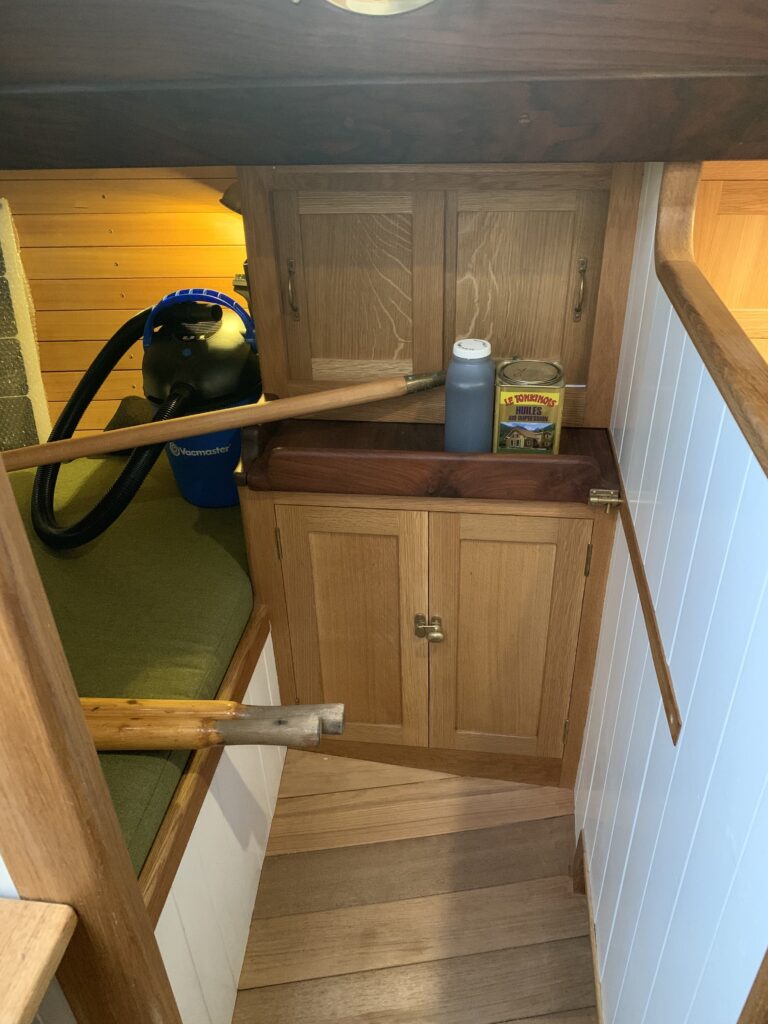Owner’s Description
The boat was built by Channel Cutter Yachts of Ladysmith, BC. A one man shop, run by owner/builder Bryan Gittins. The design is from Lyle Hess, a continuation of his series of yachts inspired by the British channel cutters.
The design was commissioned by Ed McNeil. Ed had been making BCC 28’s up in Canada and was not happy with the profit margins on the smaller boat. He was also having disagreements with Sam Morse Co. over royalties due to the lack of HIN numbers his Canadian boats and the associated lack of accountability. Ed was asked to stop BCC 28 production, and he decided he needed a larger boat. So he commissioned Lyle Hess to design the Falmouth 34, and then moved production to South Africa where he thought he could produce them cheaper. Ed produced 6 hulls in SA before decided building there and shipping to the US was not practical after all. During this time Bryan Gittins, who had preciously worked with Ed finishing hulls in Canada, got involved with the Falmouth 34s and decided to take up production.
Bryan purchased the company, Channel Cutter Yachts, and the production rights to the boat and setup shop on Vancouver Island, BC. Ed made a final hull and deck which he shipped to Bryan, then subsequently destroyed the SA molds. Bryan used the hull and deck to build his own molds and production was started. The original SA hull was sold to Kaj Jakobsen in order to build “Astrid”, a sister ship that can be found on this site.
Channel Cutter Yachts is a low volume semi-custom producer, and after almost 20 years, Aarda is hull #5. Aarda is what might be considered a “spirit of tradition” yacht. A traditional looking exterior with a fairly modern interior and systems.
The hull and deck are glass. The teak deck was laid over the glass, glued and temporarily fastened down. Once the glue cured, the fasteners were backed out and the holes epoxy filled. So though the bungs make it look fastened, there are no fasteners left in the deck. The coamings, bulwarks and cabin trim also all teak.
All the exterior fittings are bronze. A few pieces from Port Townsend Foundry, but most are from custom molds owned by Bryan and cast at the Achinback Foundry in Victoria, BC. Bryan does the finish work himself, with the occasional use of a local machinist. A few custom pieces, including bronze eye bolts, vent and drain covers were patterned and cast by the owners.
The mast, boom and whisker pole are of Sitka Spruce, the bowsprit of Fir. Also all made by Bryan. The mast is hollow, using the bird’s mouth construction technique, with the electrical wiring all run in conduits up the interior. The spars and hatches are finished with Tonkinois Original varnish.
The standing rigging is all synthetic, of Colligo Dux, with custom cast bronze thimbles. This was done more from a practical ease of installation and splicing standpoint, as opposed to trying to reduce weight. The bowsprit whisker stays and bobstay are served, as is the lower 10′ of the shrouds.
Sails were built by Northwest Sail and Canvas of Clipper Canvas, a cream colored polyester cloth often used on traditional vessels. The main is slab reefed, the staysail hanked on, and the jibs, genoa and drifter all flown from a luff furler which is pulled in/out on the bowsprit with a traveler. Though Aarda is a basic Bermuda cutter rig, one sister ship built by Bryan, “Lookfar”, is gaff rigged.
The windlass is a bronze version of the famous/infamous two speed manual Simpson Lawrence Seatiger 555, still being made by SL Spares in the UK… though normally out of aluminum and painted white.
A restored 8′ Fatty Knees dinghy sits on the cabin top. I don’t think you can legally own a Lyle Hess BCC, or F34, without a Fatty Knees dinghy. This one made in 1986, before the Edey & Duff production run.
A few modifications were made from Bryan’s standard exterior layout, but the interior is a custom design by the owners. The interior is of quarter sawn white oak cabinetry, spruce ceiling, white painted yellow cedar slats, and western walnut for the cabin sides and saloon table. Besides the white slats and unfinished teak sole, all is finished with Tonkinois Bio-impression oil/sealer. The galley and head counter tops are of a black paper resin composite.
Interior systems are a modern compromise. A 400Ah lithium electrical installation with high output alternator and LED strip lights, along with a kerosene cooktop and cast iron diesel heater. Pressure water, with engine hot water calorifier along with foot pumps for both fresh and salt. The toilet is a modified C-Head composting toilet. There is a modern chart plotter, which conveniently hides away along the companionway, doppler radar, AIS, depth, wind and radio all on a NMEA 2000 backbone.
Both settees double as sleeping berths, and the quarter berth is a tight double. The interior was designed for a family of three, along with a guest in the pilot berth. But if pressed, it could sleep seven.
Photos
Map
No Records Found
Sorry, no records were found. Please adjust your search criteria and try again.
Google Map Not Loaded
Sorry, unable to load Google Maps API.
Comments
